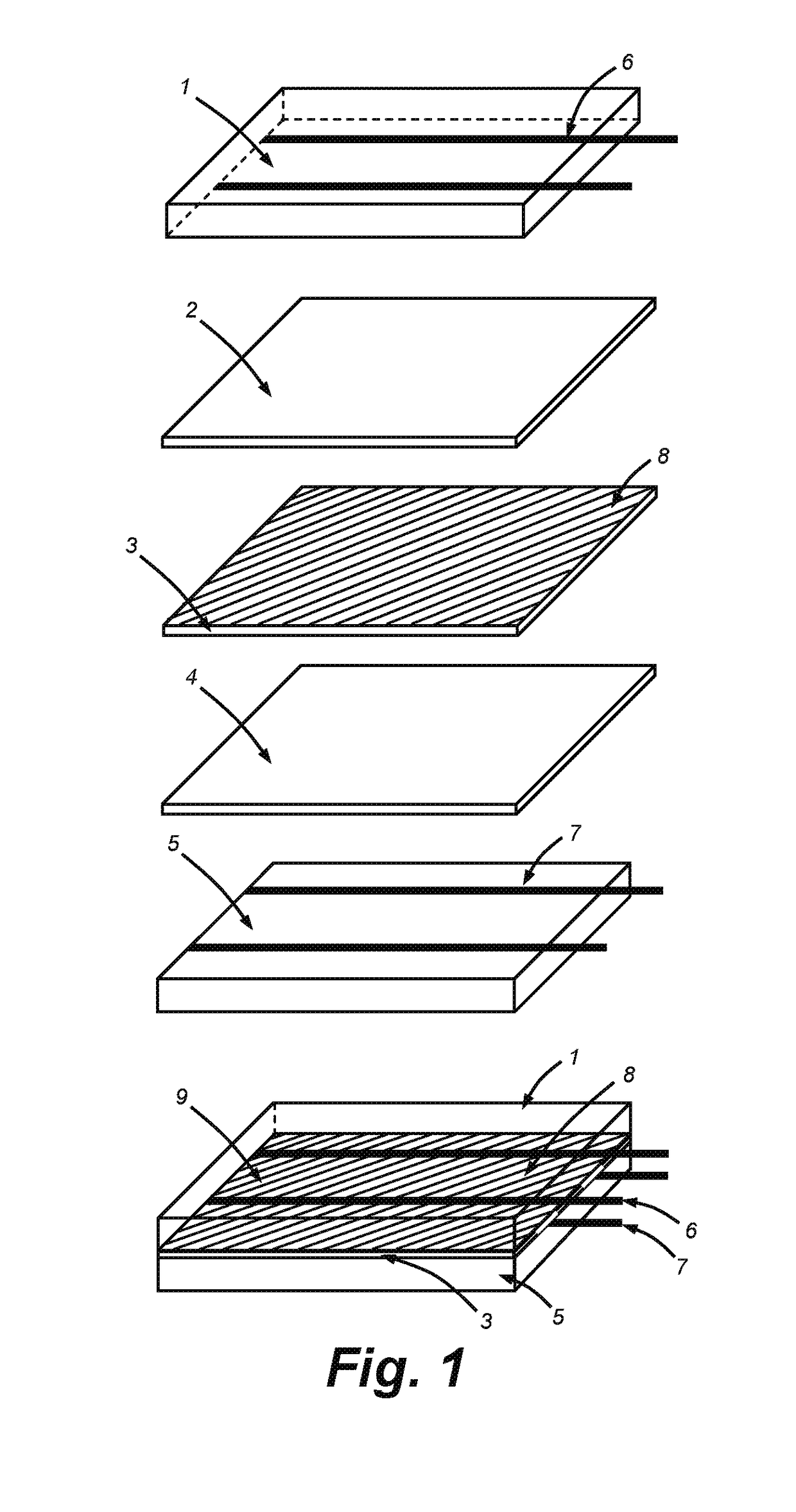Single-cell encapsulation and flexible-format module architecture and mounting assembly for photovoltaic power generation and method for constructing, inspecting and qualifying the same
- Summary
- Abstract
- Description
- Claims
- Application Information
AI Technical Summary
Benefits of technology
Problems solved by technology
Method used
Image
Examples
Embodiment Construction
[0043]Single cell encapsulation (SCE) technology according to the illustrative embodiments described below can be a plug-in solution for existing cell and / or module manufacturing lines, which enables the production of lower-cost and higher-performance PV modules, while incorporating a number of desirable features.
[0044]Standard cell manufacturing lines produce photovoltaic cells, which consist of a thin (typically approximately 180 μm) silicon wafer with front and back electrodes. The cells are very fragile and need to be handled with extreme care, and therefore breakage of the cells poses limits on the minimum practical thickness of the cell in a conventional module assembly line. On the other hand, thinner cells require less silicon material and therefore enable lower material cost. Encapsulating the cells as they leave the cell manufacturing line provides strength and protection to the fragile silicon and will enable the handling of ultra-thin (<120 μm) cells without the need for...
PUM
 Login to View More
Login to View More Abstract
Description
Claims
Application Information
 Login to View More
Login to View More - R&D
- Intellectual Property
- Life Sciences
- Materials
- Tech Scout
- Unparalleled Data Quality
- Higher Quality Content
- 60% Fewer Hallucinations
Browse by: Latest US Patents, China's latest patents, Technical Efficacy Thesaurus, Application Domain, Technology Topic, Popular Technical Reports.
© 2025 PatSnap. All rights reserved.Legal|Privacy policy|Modern Slavery Act Transparency Statement|Sitemap|About US| Contact US: help@patsnap.com



